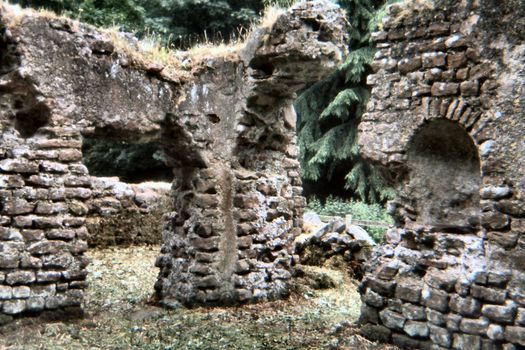Ravenglass Roman Bath House
Ravenglass Roman Bath House (also known as Walls Castle) is a ruined ancient Roman bath house at Ravenglass, Cumbria, England. Belonging to a 2nd-century Roman fort and naval base (known to the Romans as Itunocelum), the bath house is described by Matthew Hyde in his update to the Pevsner Guide to Cumbria as "an astonishing survival". The still standing walls are 13 ft (4 m) high, there are patches of the internal rendering, in dull red and white cement, and traces of the splayed window openings remain.
The remaining fragment appears to be the west end of a building which was about 40 ft/12 metres wide and about 90 ft/27 metres long (see plan). It consisted of a suite of rooms arranged in a double sequence along the building. The entrance and changing area (apodyterium) contains niches, perhaps originally for statues. The use of the other rooms is not known, but there would have been a range of warm rooms, a hot bath and a cold plunge. The north and south walls have external buttresses which were probably intended to take the weight of a vaulted roof. Excavations were carried out at the bath house in 1881. Remains of the hypocaust heating system were uncovered, but they have since been reburied.
The site can be reached from Ravenglass via a "miles without stiles" pedestrian route (part of a project to improve access for people with disabilities to places in the Lake District National Park). The route follows a private road which runs parallel to the railway. The ditch of the fort is visible from the bath house, but it is on private land and is bisected by the railway tracks of the Cumbrian Coast Line.


















